Features of Dimetris streptocarpus
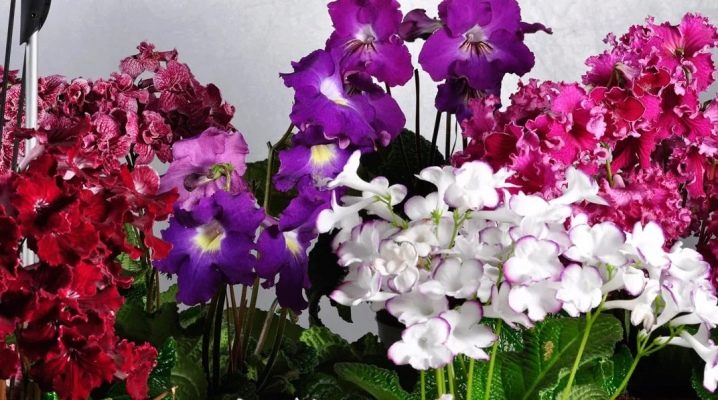
There are many plants that are popular as indoor flowers. Streptocarpus are one of them, they are valued for their amazing decorative qualities and abundant flowering. Among the varieties, the Dimetris species is not the last in popularity.
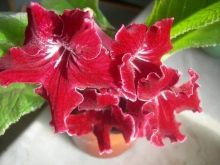
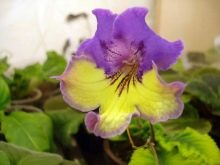
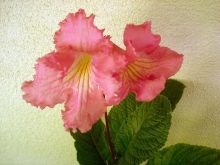
general description
A popular home plant, Streptocarpus is native to Africa and can also be found in Madagascar and the Comoros. The flowers are a five-leafed bud that looks a lot like an orchid... The flower is located on a long peduncle and seems to float above the foliage.
In their natural environment, there are species that grow on shaded slopes or rocks, on the ground, in rock crevices, and almost everywhere where the seed can germinate and take root. For the home, breeders have created many hybrids of various colors and shapes.
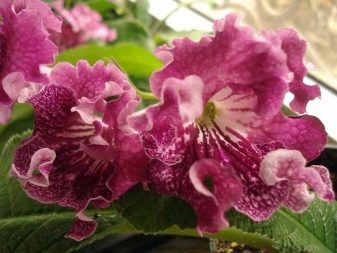
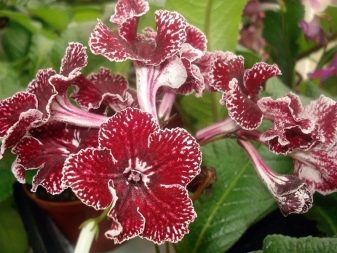
Although the flower is commonly referred to simply as streptocarpus or streps, the common name for the plant is primrose, it is this that is most often used, since there is a superficial resemblance to the genus of primroses.
It cannot be said that "Dimetris" belongs to a separate variety - no, it's just a brand under which other plants are grown, for example, gloxinia, saintpaulia. It was founded by the husband and wife of the Yenikeevs, originally from Dnepropetrovsk.
There are a lot of varieties under the DS sign, any grower will appreciate the impressive collection of flowers bred by these breeders.
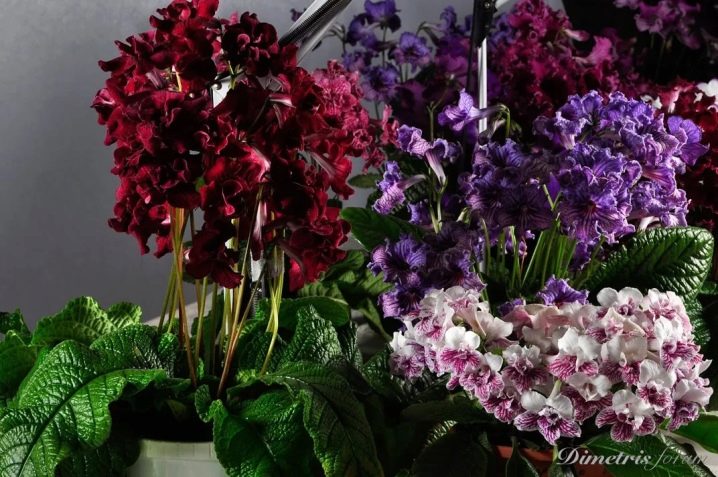
Varieties
- "DS-Smoke"... This variety is bicolor and shows abundant flowering. The shade is quite gentle, brightly colored rays emerge from the center. The upper two petals are pale lilac, the lower ones can be just white or with streaks of lilac.
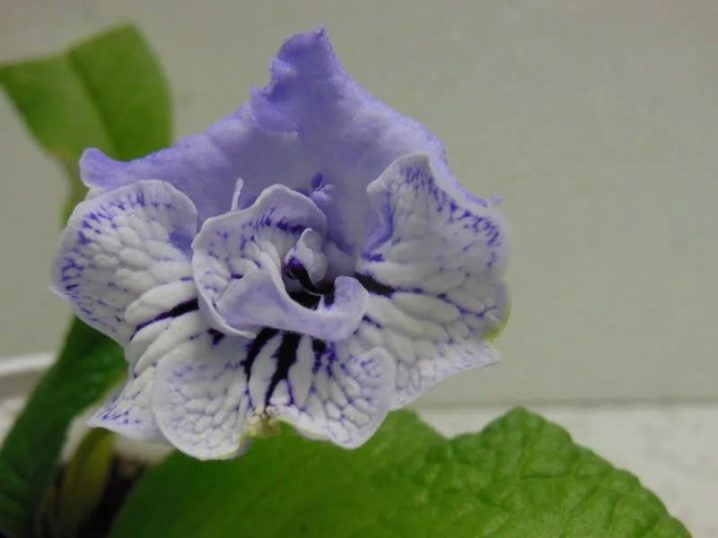
- "DS-1290"... The plant has large buds. There are two shades on the petals: lilac and blue. The flowers are semi-double, the lower petals are yellow, but not bright, there is a blue mesh on the front side. The variety was bred in 2013.

- DS-1755. Streptocarpus, which appeared at the disposal of plant breeders only in 2017. The flower after blooming pleases with a dark burgundy shade, the petals below are almost black. Terry buds, the plant always blooms profusely.

- DS-1719... Demonstrates burgundy, double, unusual-shaped buds, in which the core has a lighter shade.
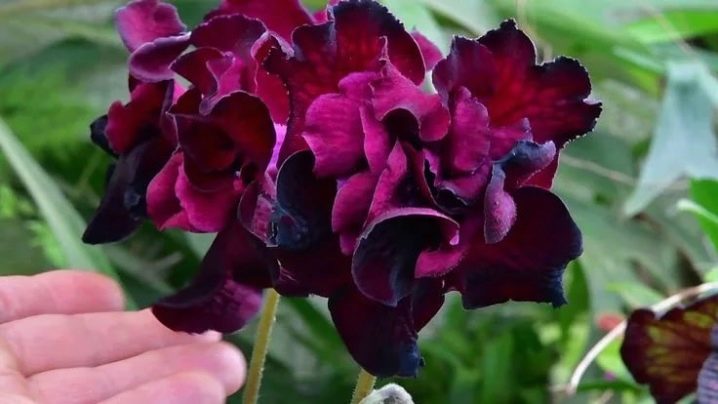
- "DS-Eternity"... On the surface of the pink petals, well-traced veins and dots of a dark shade are visible. Peduncles are long, strong, each flower pleases with its beauty for about a month.
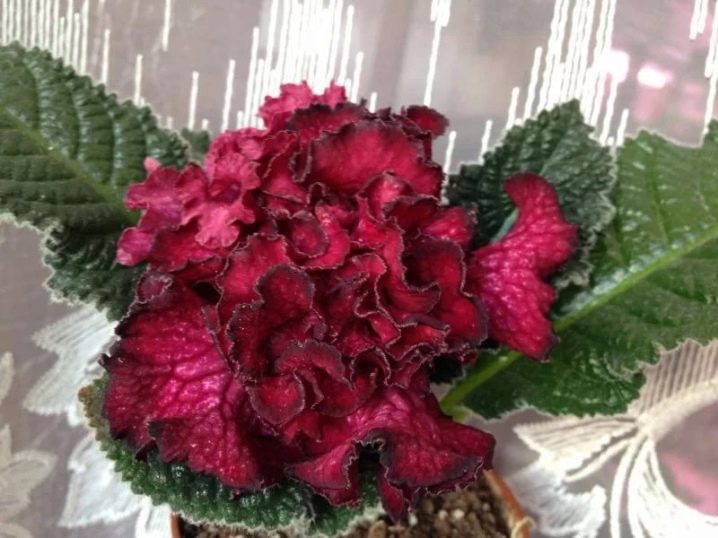
- "DS-Shake"... This variety will appeal to those who love the red shades of the buds. Flowering is always abundant, flowers are densely double.
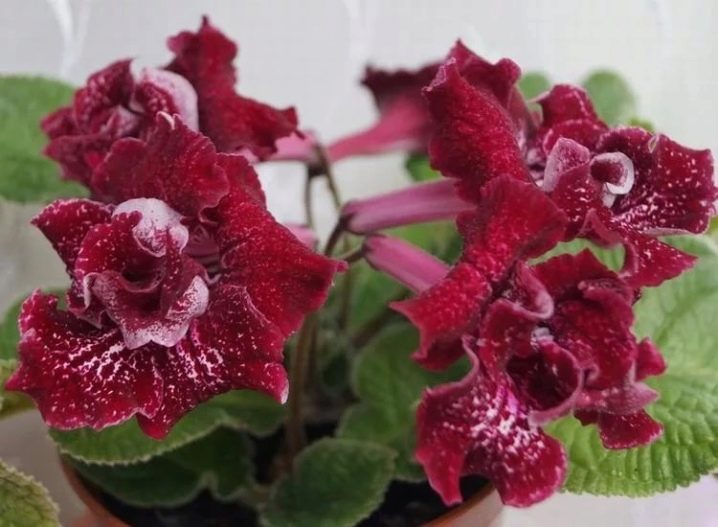
- DS-Alpha... This plant is distinguished by its large bud size, the shade of which is between burgundy and brown. Very similar to the royal mantle, only double flowers.
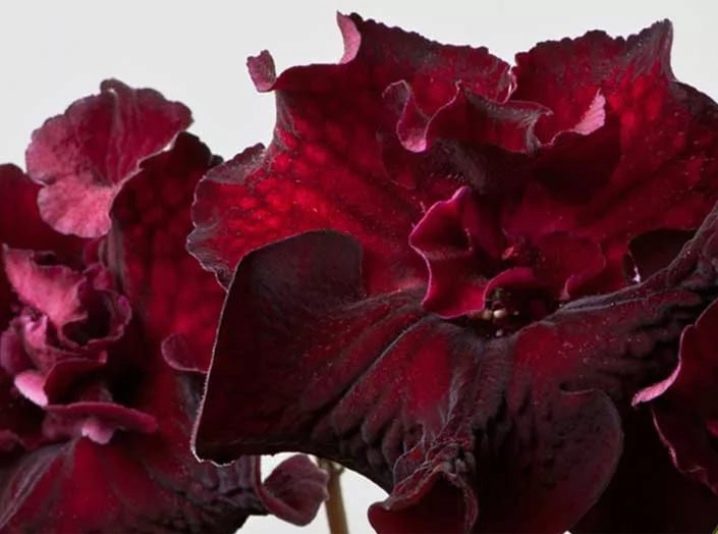
- "DS-King of Clubs". The almost black shade of the petals attracted many breeders. Peduncles are formed on the bush strong, the rosette is neat. The buds are dense, beautiful, double.
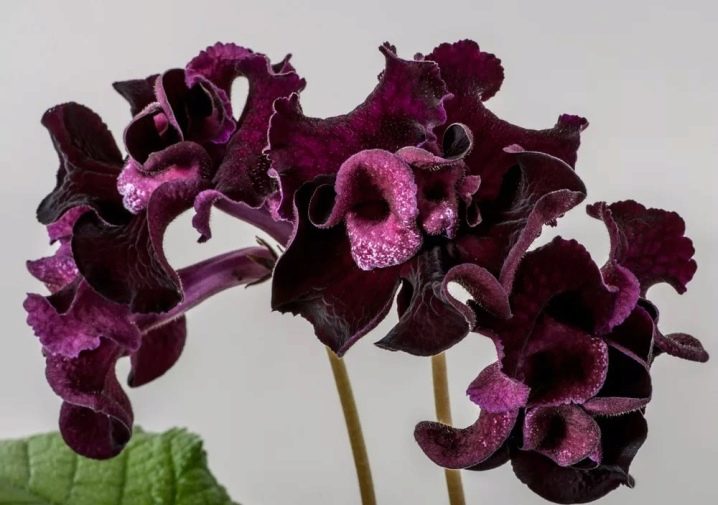
- DS-Lena. This variety can be distinguished for its semi-double flowers and a smooth transition on the petals from yellow to lilac. The edges of the flowers are slightly wavy.
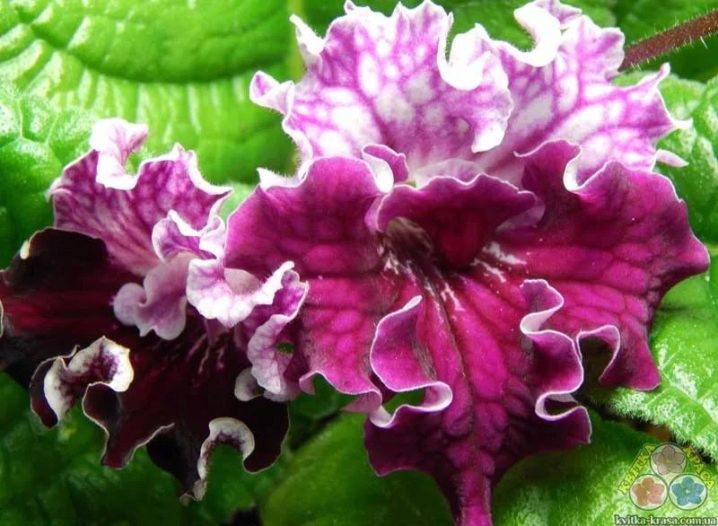
- DS-Midnight Poison. It is difficult to take your eyes off this plant due to its bright, poisonous shade of purple. There is a contrasting mesh on the surface of the petals. It blooms profusely, the flower stalks grow strong, hold the buds well. The flowers are purple, but differ in the presence of black lines on the petals.
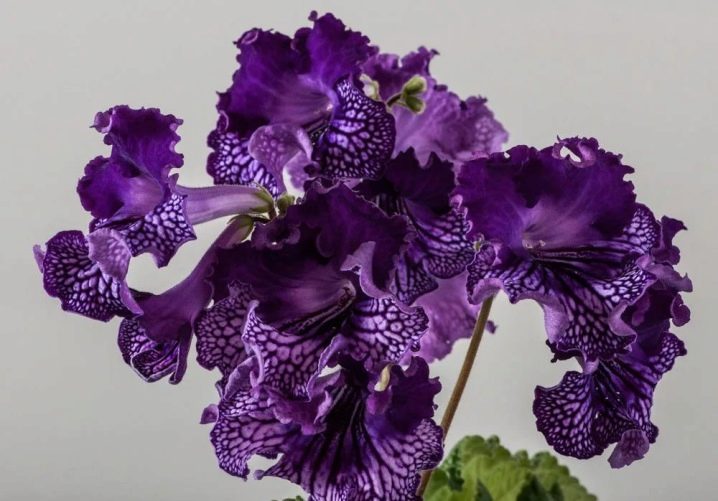
- "DS-Aphrodisiac"... The buds on the bush of the described variety are formed large, the predominant color on the petals is white, there is a blue mesh, which is located only on the lower part of the flower.
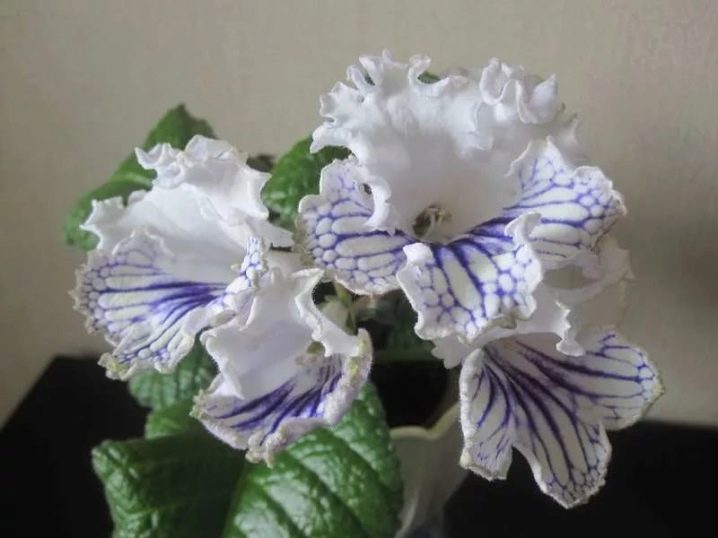
- DS-Almandine. Of all the varieties, this one has one of the largest buds - they reach 70 mm in diameter. The petals are wavy, the color is purple, closer to ink, it is distinguished by the presence of crimson stripes and white blotches.
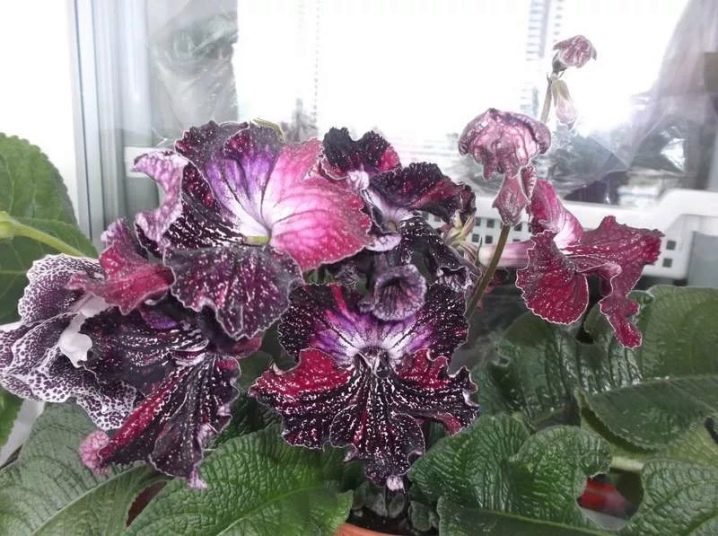
- DS Crazy. It is difficult not to appreciate the presented variety, since it has large - up to 90 mm - flowers, in which the petals are hyper-belly. Peduncles are short, strong. The predominant shade is pink, there are bright blotches that are more intensely present on the lower petals.
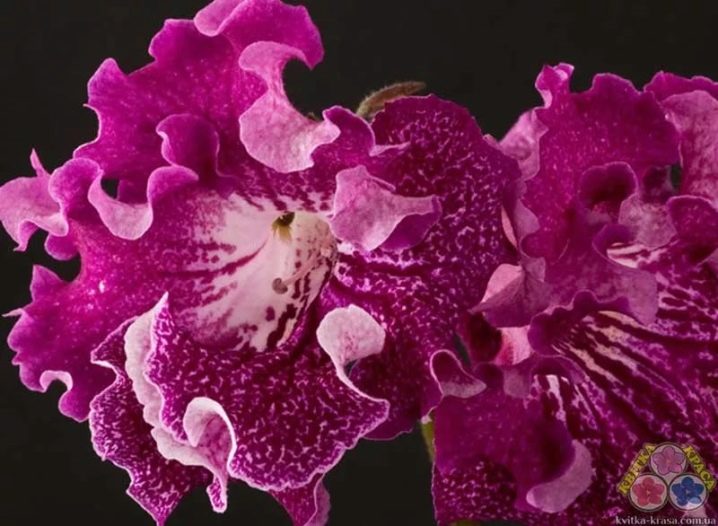
- "DS-Pink Dreams". It is easy to guess from the name what color the buds are formed on the bush. Flowers up to 80 mm, double, with a light pleasant aroma.
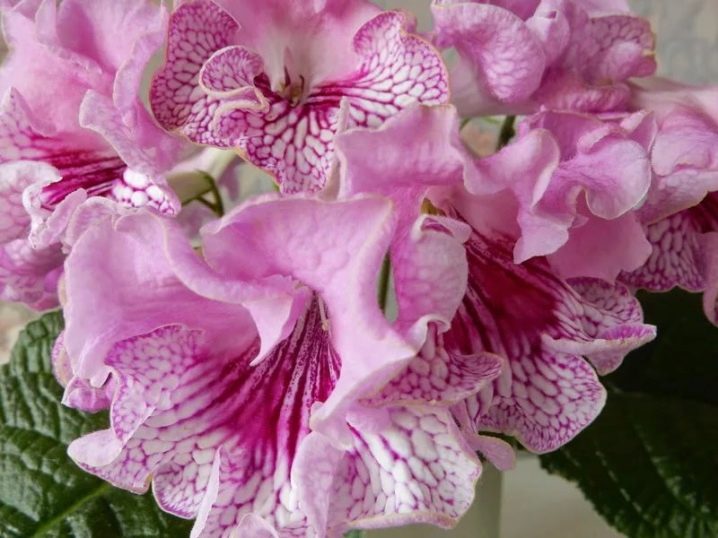
- "DS-Angel's Kiss". The presented variety fell in love with plant breeders for the abundance of flowering. The shade is very bright, pink, with a more intense crimson mesh applied to the surface.
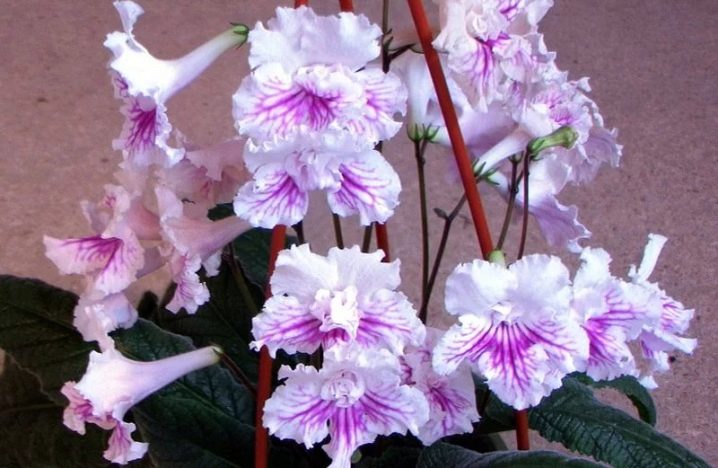
- "DS-Mozart"... The largest flowers are formed in this plant, their width reaches 110 mm. The upper petals are blue-violet, yellow below, but not monochromatic, but with a grid.
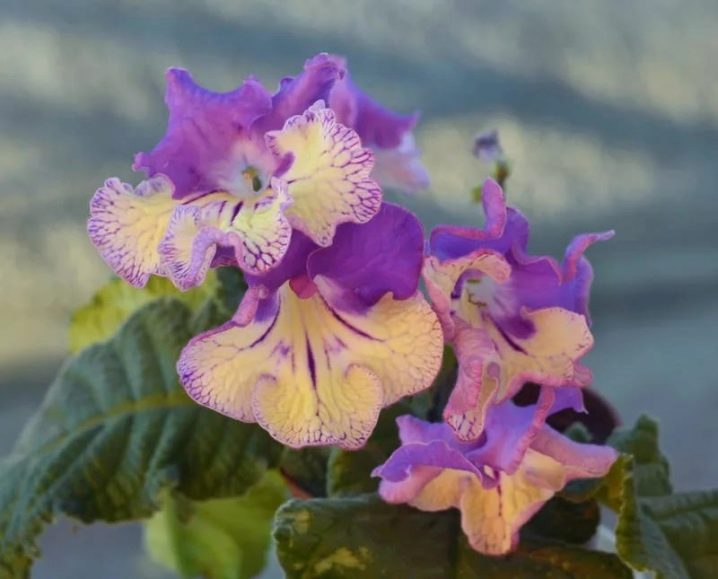
Growing and care
The two main things to remember when growing streptocarpus are they don't like waterlogged soil, but they don't like dry soil.
For planting, use soil with the addition of perlite, since it makes it more airy. You should always check the drainage holes in the bottom of the container so that they are not clogged with roots and allow water to flow freely.
The temperature of the flower content is + 18-25 C, a decrease to 10 C with a plus sign is allowed. The light should be bright but indirect, artificial lighting is suitable. Even with a lack of sunlight, the plant does not stop blooming, only fewer buds are formed.
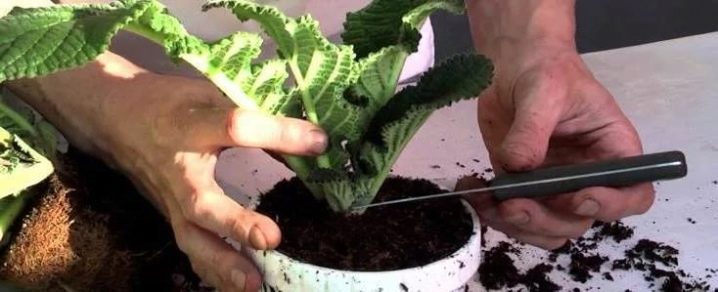
Watering is done only when the soil becomes dry. Some gardeners choose to water when the leaves have begun to wilt. There is nothing to worry about: they recover well after dehydration, and this is one of the features of the presented species.
You can feed it during the period of active growth, using complex water-soluble additives with a large amount of phosphorus. Nitrogen supplements should be used with caution.
As a rule, streptocarpus blooms from spring to autumn. In winter, he goes into hibernation and can shed leaves, which is the norm for him. However, there are also varieties that bloom in winter.
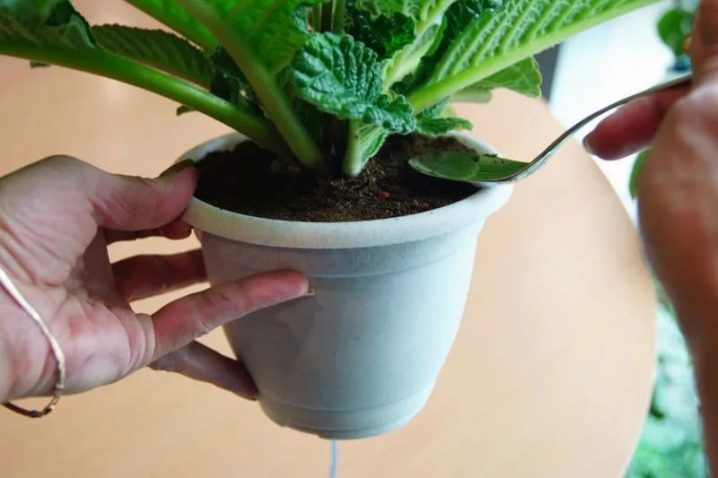
From time to time, it is allowed to remove yellowed leaves at the base. They are old, respectively, die over time. If there is a healthy leaf with damage, then you can successfully cut it off completely or only part of it. After flowering, the peduncles are removed at the root.
Streptocarpus is usually rarely damaged by pests or diseases. However, the most common ailments are aphids and mealy mites. The problem is quickly resolved with neem oil, alcohol treatment, or simply overhead watering. Fungal diseases are treated with fungicides.

For the features of Dimetris streptocarpus, see below.



























The comment was sent successfully.